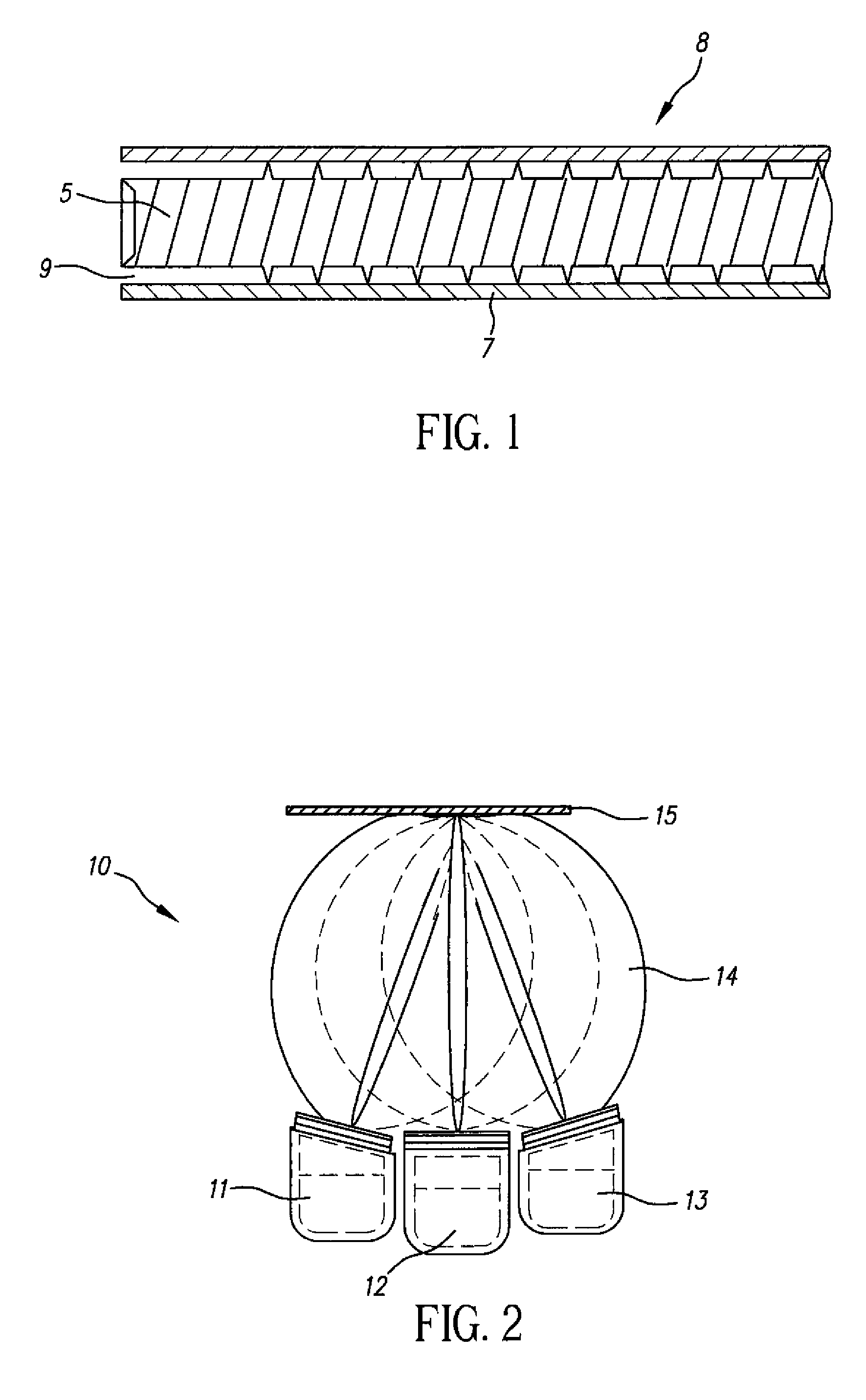Vaporization apparatus with precise powder metering
a powder metering and vaporization apparatus technology, applied in vacuum evaporation coatings, chemical vapor deposition coatings, coatings, etc., can solve the problems of increasing the risk of contamination, difficult to precisely meter small amounts of powdered materials, and the use of carriers
- Summary
- Abstract
- Description
- Claims
- Application Information
AI Technical Summary
Benefits of technology
Problems solved by technology
Method used
Image
Examples
Embodiment Construction
[0038]Turning now to FIG. 3, there is shown a cutaway view of one embodiment of an apparatus according to the present invention. Vaporizing apparatus 100 is an apparatus for vaporizing particulate material. Vaporizing apparatus 100 includes a metering apparatus, which includes: a reservoir for receiving particulate material; a housing having an internal volume and first and second openings; a rotatable shaft disposed in the internal volume having a shape corresponding to that of the internal volume and a circumferential groove; and a scraper having at its end substantially the same cross section as the groove in the rotating shaft. These components will be described in more detail. Reservoir 130a is for receiving particulate material. The particulate material can include a single component, or can include two or more different material components, each one having a different vaporization temperature. Although not shown, reservoir 130a can include a larger storage and feeding apparat...
PUM
| Property | Measurement | Unit |
|---|---|---|
| width | aaaaa | aaaaa |
| depth | aaaaa | aaaaa |
| depth | aaaaa | aaaaa |
Abstract
Description
Claims
Application Information
 Login to View More
Login to View More - R&D
- Intellectual Property
- Life Sciences
- Materials
- Tech Scout
- Unparalleled Data Quality
- Higher Quality Content
- 60% Fewer Hallucinations
Browse by: Latest US Patents, China's latest patents, Technical Efficacy Thesaurus, Application Domain, Technology Topic, Popular Technical Reports.
© 2025 PatSnap. All rights reserved.Legal|Privacy policy|Modern Slavery Act Transparency Statement|Sitemap|About US| Contact US: help@patsnap.com



